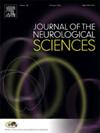Usefulness of serum neurofilament light chain in chronic inflammatory demyelinating polyradiculoneuropathy
IF 3.6
3区 医学
Q1 CLINICAL NEUROLOGY
引用次数: 0
Abstract
Background
The development of new biomarkers is essential to improve diagnostic accuracy and guide treatment decisions in chronic inflammatory demyelinating polyradiculoneuropathy (CIDP). The aim of this study was to investigate the utility of the serum neurofilament light chain (sNfL) level as a marker for disability and response to immunomodulatory treatment in patients with CIDP.
Methods
This prospective, single-center, observational study included 38 patients with CIDP: 19 treatment-naive (CIDP-I) patients assessed before and after the initiation of immunomodulatory therapy and 19 stable patients on maintenance immunoglobulins (CIDP-M). Clinical scales (INCAT, I-RODS, MRC-SS and grip strength) were used to assess disability and treatment response. Nerve conduction study data were collected.
Results
The median sNfL level (pg/mL) was greater in CIDP-I patients than in CIDP-M patients (23.4 vs. 7.7; p = 0.002). A reduction in sNfL levels was observed in CIDP-I patients after 5 months of immunomodulatory treatment (23.4 vs. 15.0; p = 0.001). sNfL levels were correlated with greater disability as assessed by the INCAT (p = 0.007), I-RODS (p = 0.004), and MRC-SS (p = 0.016) in treatment-naive patients but not in those receiving maintenance therapy. sNfL levels correlated with the average amplitude of the distal compound muscle action potential of the median, ulnar, peroneal and tibial nerves from the most affected limb (p = 0.043).
Conclusions
sNfL levels are significantly reduced in patients with CIDP who respond to immunomodulatory treatment and are positively correlated with disability. These findings highlight the utility of sNfL as a marker of disease activity and treatment response in patients with CIDP.
求助全文
约1分钟内获得全文
求助全文
来源期刊

Journal of the Neurological Sciences
医学-临床神经学
CiteScore
7.60
自引率
2.30%
发文量
313
审稿时长
22 days
期刊介绍:
The Journal of the Neurological Sciences provides a medium for the prompt publication of original articles in neurology and neuroscience from around the world. JNS places special emphasis on articles that: 1) provide guidance to clinicians around the world (Best Practices, Global Neurology); 2) report cutting-edge science related to neurology (Basic and Translational Sciences); 3) educate readers about relevant and practical clinical outcomes in neurology (Outcomes Research); and 4) summarize or editorialize the current state of the literature (Reviews, Commentaries, and Editorials).
JNS accepts most types of manuscripts for consideration including original research papers, short communications, reviews, book reviews, letters to the Editor, opinions and editorials. Topics considered will be from neurology-related fields that are of interest to practicing physicians around the world. Examples include neuromuscular diseases, demyelination, atrophies, dementia, neoplasms, infections, epilepsies, disturbances of consciousness, stroke and cerebral circulation, growth and development, plasticity and intermediary metabolism.
 求助内容:
求助内容: 应助结果提醒方式:
应助结果提醒方式:


